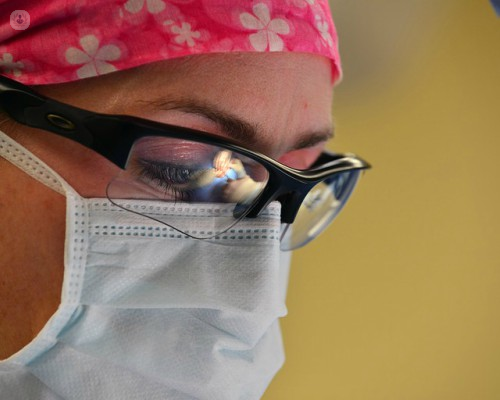How to treat jaw atrophy for lack of teeth
Written by:
What is the treatment of atrophies in the jaw due to lack of teeth?
The atrophy of the jaws as a result of losing the teeth is a very important bone loss that makes it difficult for the patient to carry normal teeth and has a clearly facial atrophy, with a feeling of aging of the face, wrinkles on the face, etc.. Normally it is a complex treatment because we do reposition the jaw or jaw where it was, making an advance of the bone, and some bone grafts.
Can the treatment of atrophy in the jaw involve any kind of risk?
All interventions have minimal risk. Nowadays it has been overcome a lot, everything has been tested and monitored, it is difficult. But it can take a complexity treatment, which requires bone obtained from the hip, for example, or autologous bone, or bank bone (no need to take it from the patient). The extracted one actually has nothing but an early limp and to withstand the time, which is long, of the reconstruction of the implants and the bone graft in the face, nine months or so.
How is the postoperative performed? Should any type of rehabilitation be done?
The postoperative period is a fairly complex postoperative period, it is not painful, it is uncomfortable. We always provide patients with temporary implants so that they can wear the prosthesis, face the public well and satisfactorily eating soft, etc.. It is tolerated well, there is no problem in the postoperative period. There is a phase of rehabilitation that accompanies the treatment, which is mainly in the prophylaxis of a thrombosis or thrombophlebitis, in which we do a prophylaxis of calcium heparin so that there is no clot that can detach, and especially monitor, test and use the muscles of the legs, lower extremities and do exercises on the face, in the jaw, to move the musculature, simple.
What results does it offer? Will there be some kind of scar?
We usually do everything without a scar. Incision inside the mouth, inside the mucosa, except for the incision where we take the bone, which can be in the hip or it can be in the chin or inside the mouth. There are no scars and it is an important benefit for the patient because, I repeat, we created a new alveolar process that was atrophic due to disuse, due to the lack of teeth, and we created a normal facies, similar to what it was before, they are very happy and It gives a great satisfaction to the patient.



